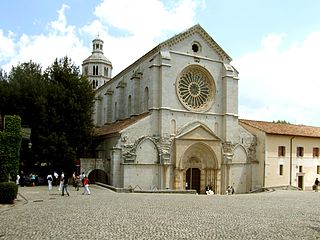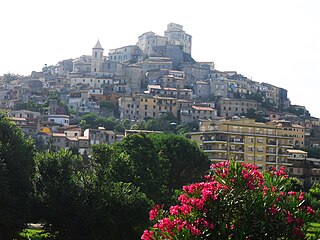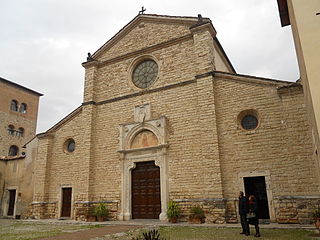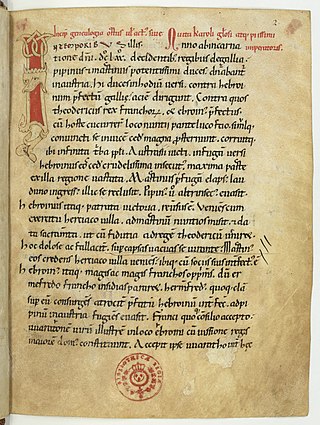
A chronicle is a historical account of events arranged in chronological order, as in a timeline. Typically, equal weight is given for historically important events and local events, the purpose being the recording of events that occurred, seen from the perspective of the chronicler. A chronicle which traces world history is a universal chronicle. This is in contrast to a narrative or history, in which an author chooses events to interpret and analyze and excludes those the author does not consider important or relevant.
Historians in England during the Middle Ages helped to lay the groundwork for modern historical historiography, providing vital accounts of the early history of England, Wales and Normandy, its cultures, and revelations about the historians themselves.
A number of Irish annals, of which the earliest was the Chronicle of Ireland, were compiled up to and shortly after the end of the 17th century. Annals were originally a means by which monks determined the yearly chronology of feast days. Over time, the obituaries of priests, abbots and bishops were added, along with those of notable political events. Non-Irish models include Bede's Chronica maiora, Marcellinus Comes's Chronicle of Marcellinus and the Liber pontificalis.

Fossanova Abbey, earlier Fossa Nuova, is a church that was formerly a Cistercian abbey located near the railway station of Priverno in Latina, Italy, about 100 kilometres (62 mi) south-east of Rome.

Ceccano is a town and comune in the province of Frosinone, Lazio, central Italy, in the Latin Valley.
Ottaviano di Poli, a member of the family of the Counts of Poli, was an Italian Roman Catholic Cardinal.
The Chronicon Holtzatiae auctore presbytero Bremensi is a Latin universal chronicle from the year 1448, but concentrating on the County of Holstein and written by an anonymous presbyter of Bremen originally from Holstein. It has received three modern editions, the first by the philosopher Gottfried Wilhelm Leibniz in 1698. Other than that it has been rather neglected by medievalists; its Latin is poor and its author imaginative.

Gregory of Catino was a monk of the Abbey of Farfa and "one of the most accomplished monastic historians of his age." Gregory died shortly after 1130, possibly in 1133.
The Historia belli sacri, also called the Historia de via Hierosolymis or Historia peregrinorum, is a chronicle of the First Crusade and the early years of the Crusader states written by an anonymous monk of the Abbey of Montecassino. It covers the years 1095–1131 and must have been mostly compiled around 1130. It is sometimes called the "Monte Cassino Chronicle" for simplicity.

The Annals of Vendôme are a set of medieval annals covering events from 678 to 1347. They survive in a single manuscript copy, the exemplar of which came from the Abbey of the Holy Trinity at Vendôme.
The Chronicon Novaliciense is a monastic chronicle which was written in the mid-eleventh century in the valley of Susa.
The Chronicle of Saint-Pierre-le-Vif of Sens is an anonymous Latin chronicle written at the Abbey of Saint-Pierre-le-Vif in Sens between about 1100 and 1125 with continuations added into the 13th century. The original work was attributed to a monk named Clarius by Dom Victor Cottron in 1650, but this is not now accepted. It is, however, sometimes still labeled the Chronique dite de Clarius. The Chronicle is mainly a history of the abbey and of the city of Sens.
John of Ferentino, in Italian Giovanni da Ferentino, was an Italian notary, curialist and cardinal of the Catholic Church. He served as the cardinal deacon of Santa Maria in Via Lata from 1204 until 1212 and then as the cardinal priest of Santa Prassede until his death. He served as an apostolic legate to England in 1206 and as rector of the Papal states in Campania in 1217.
William (c.1177–1234) was a Benedictine monk and historian from the Kingdom of France. He served from 1207 as the proctor for his abbey in its legal battles and then from 1211 as the abbot of the abbey of Saint Sauveur et Sainte Rotrude d'Andres, a position he held until his death. Beginning in the 1220s, he wrote a long chronicle of his abbey, the Chronicon Andrense.

The Chronicle of Aniane is an anonymous Latin history covering the rise of the Carolingian family from 670 to 840. It was composed by a monk of the Abbey of Aniane.
The Chronicon Wormatiense is a fragmentary anonymous Latin chronicle of the city of Worms, Germany. It was probably composed in the last quarter of the 13th century. There is an English translation by David Bachrach.

The Ghibelline Annals of Piacenza is an anonymous Latin chronicle of Piacenza from 1154 to 1284.

Gertrude of Merania, the queen consort of Hungary as the first wife of King Andrew II, was assassinated by a group of Hungarian lords on 28 September 1213 in the Pilis Mountains during a royal hunting expedition. Leopold VI, Duke of Austria and Gertrude's brother Berthold, Archbishop of Kalocsa were also wounded but survived the attack.
Rerum italicarum scriptores ab anno æræ christianæ quingentesimo ad millesimumquingentesimum is a collection of texts which are sources for Italian history from the 6th to the 15th century, compiled in the 18th century by Ludovico Antonio Muratori.